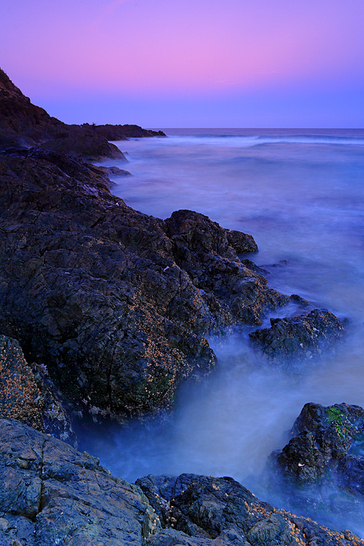|
Photographing birds is a speciality within the field of wildlife photography and it is a discipline which I am by no means an expert in. I specialise in photographing mammals, and that is what my equipment is focused towards, but every now and then I dabble in photographing our feathered friends. With a 300mm lens photographing any species of bird can be a challenge but sometimes it is important to broaden your horizons and go out of your comfort zone. So in Beachmere, Queensland I did just that. Rainbow Lorikeets are one of the most colourful and common birds throughout Australia, they make superb photography subjects and I did my best to do them justice. Here are just a couple of images from lorikeets around the house we were staying in ... It wasn't just the lorikeets that made great subjects around the area there always Blue-faced Honeyeaters around too. There was also a number of pairs of the superbly named, Willie Wagtail. These charismatic little birds were tricky to photograph due to their small stature and speedy movements. Australian Pelicans are the giants of the sky around Beachmere, with their powerful long wings they cruise overhead or skim across the water before settling and searching for the fish they feed on. They are incredibly accomplished on the water too, more than happy to move silently across the water with their submerged feet paddling away. Wading birds are incredibly common across Moreton Bay, which Beachmere is central to. Eastern Curlews are fabulous but incredibly shy and with a 300mm lens I sadly wasn't able to photograph them. However Masked Lapwings and Bar-tailed Godwit were also common and a little easier to approach. It wasn't until the last day that I cracked the technique to photograph them at so close distances so I only managed a few shots as the tide receded. Lastly, and for me most spectacularly, I had incredibly close encounter. Sitting in the house one day I received a shout from my girlfriend that a large bird flew over her, she had been sunbathing on the beach at the bottom of the garden. I rushed out with my camera to see if I could spot whatever it was that had flown over. At first, it seemed as if the vast mudflats were empty, there was nothing in sight. After a minute or two I decided to head back in to the house, retreating from the blistering Australian sun, but at that moment I noticed a brown shape moving on one of the exposed pieces of mud. Looking through my lens, I instantly realised I had been too hasty and my girlfriend was right. I knew it was a bird of prey but without my binoculars I couldn't tell what. There was only one thing for it, to start crawling through the mud and the shallow pools and get closer.
As I got down to the high tide mark, I noticed that the bird was standing atop of an object but it was too far away to see what it was. I kept on shuffling closer, ever closer until I was within perhaps 25 metres. I thought that the bird must leave the mud as I started to make my way through a pool of water. It continued to feed, seemingly unconcerned by my presence with just the occasional glance in my direction. It seemed to realise I meant it no harm, and with my low profile I can't have looked much like a person. It was now that I could see it in incredibly clarity, the setting sun had turned the bird's plumage a beautiful golden-brown and the eyes positively glowed. It was a magical experience, an encounter with a raptor like no other I had ever had. I spent over an hour watching and photographing, all the while the bird was completely relaxed. It was only when the food item had been stripped clean (seemingly a bone that had been left high and dry with the falling tide) that it flew off down the beach. What was it I hear you ask ... a Whistling Kite of course!
0 Comments
After our couple of nights in Port Stephens, it was time once more to move northwards along the eastern coast of Australia. Our next stop on this journey was Port Macquarie. Here we decided to stay close to Flynns Beach and make the most of the gorgeous coastline. We arrived around lunch time and set up our tent under the shade of the gum trees, after which Vic was reading her book and happened to look up and see this little fella ... In the afternoon we went for a little walk and enjoyed the wonderful beaches and seascapes. The next day the Koala seemed to be a little elusive and we were struggling to spot it, eventually (with the help of a campsite member of staff) we spotted it high in a gum tree. We were luck to also have a regular influx of Rainbow Lorikeets. We then headed down to the coast to enjoy the colours and scenery at sunset. After a wonderful evening, watching the world go by and photographing the rocky shore at the edge of the beach, we headed back to camp for the evening knowing that tomorrow we would be moving on again. This time to Coffs Harbour.
There was one last wildlife encounter before we left though and this time it was a really intimate experience with the Koala who climbed down the tree next to us and headed back up another tree. With a leap to a third tree it settled itself down and posed for a few images. Sadly, the leap was impossible to photography ... imagine a leaping Koala shot! |
AuthorBret Charman Archives
July 2024
Categories
All
|



















